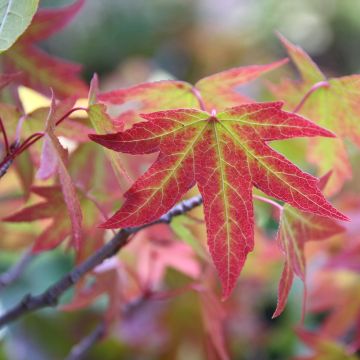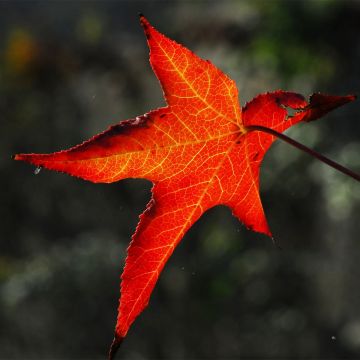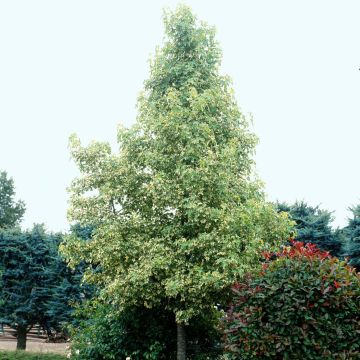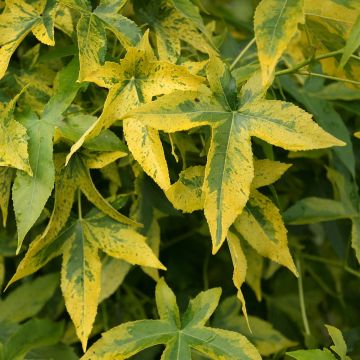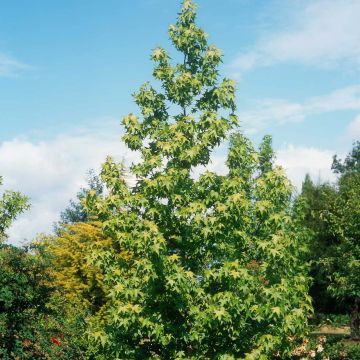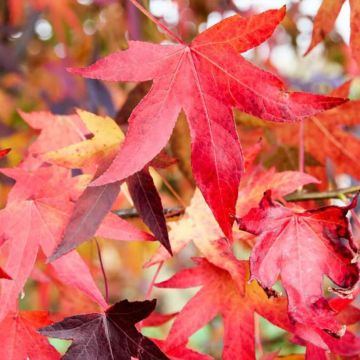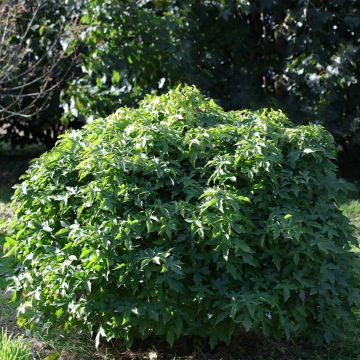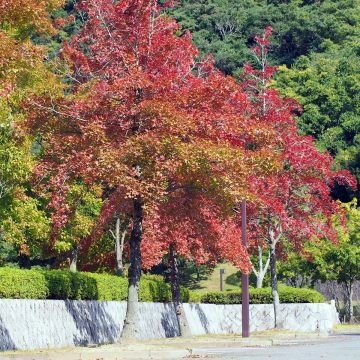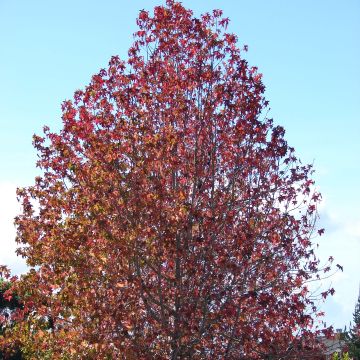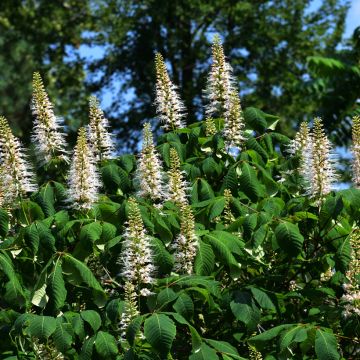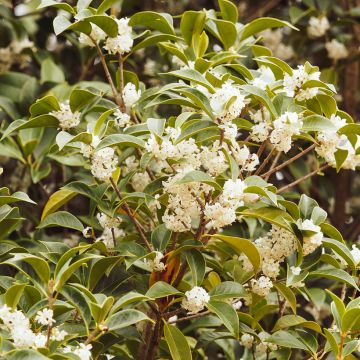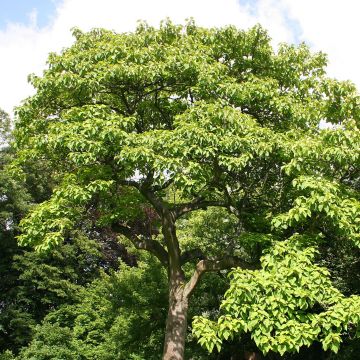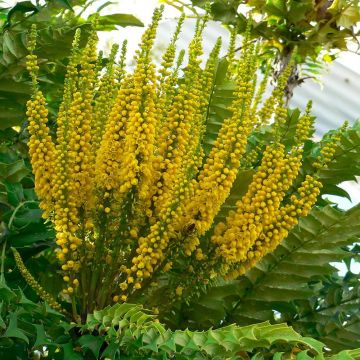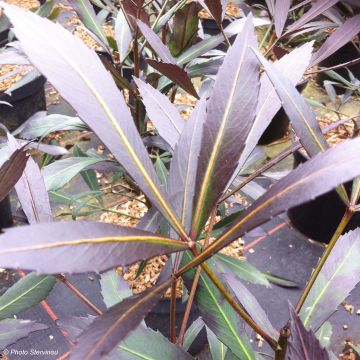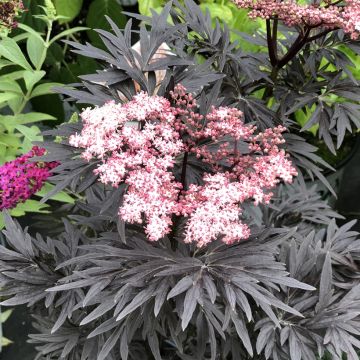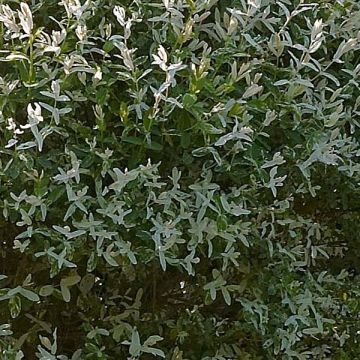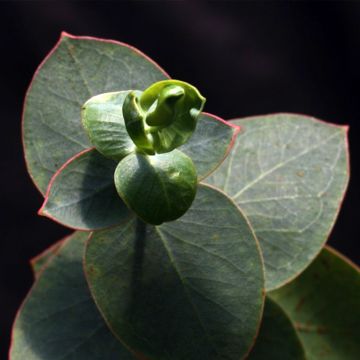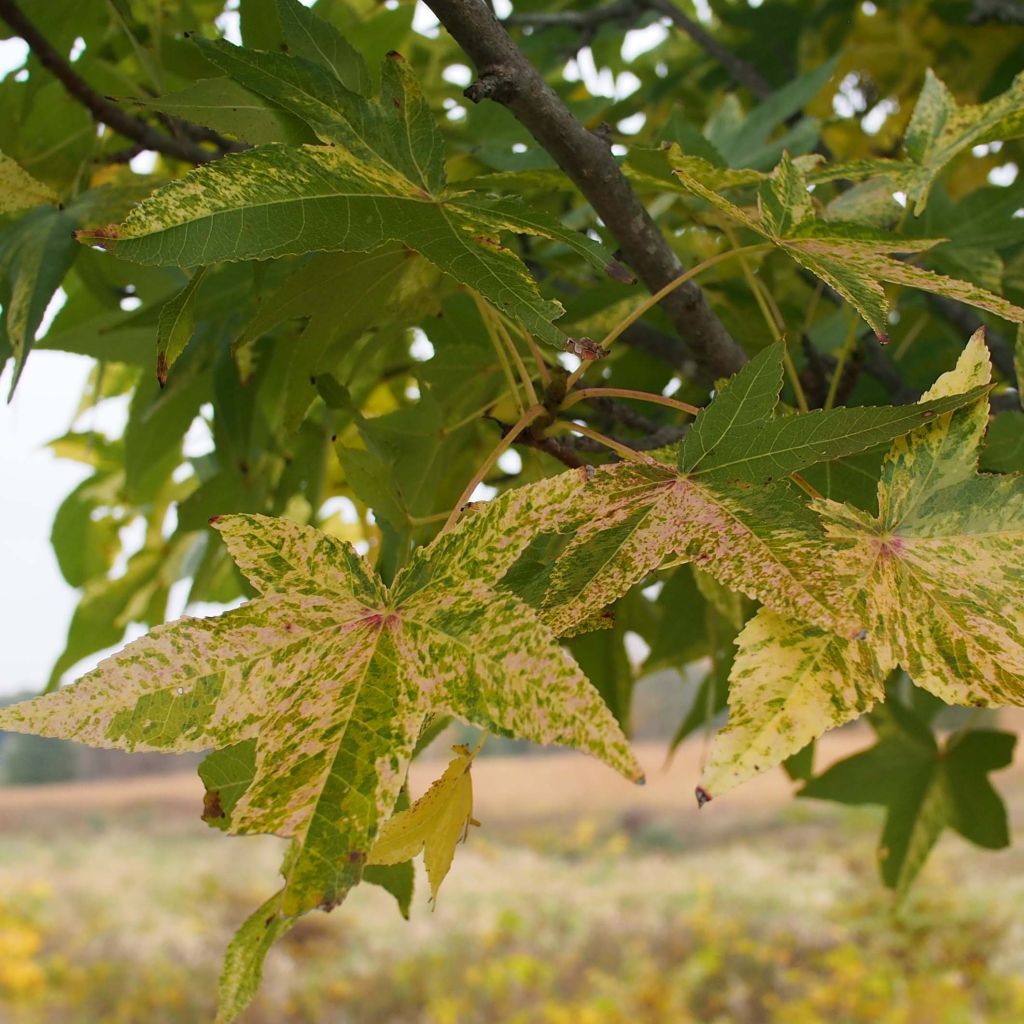

Liquidambar styraciflua Aurea
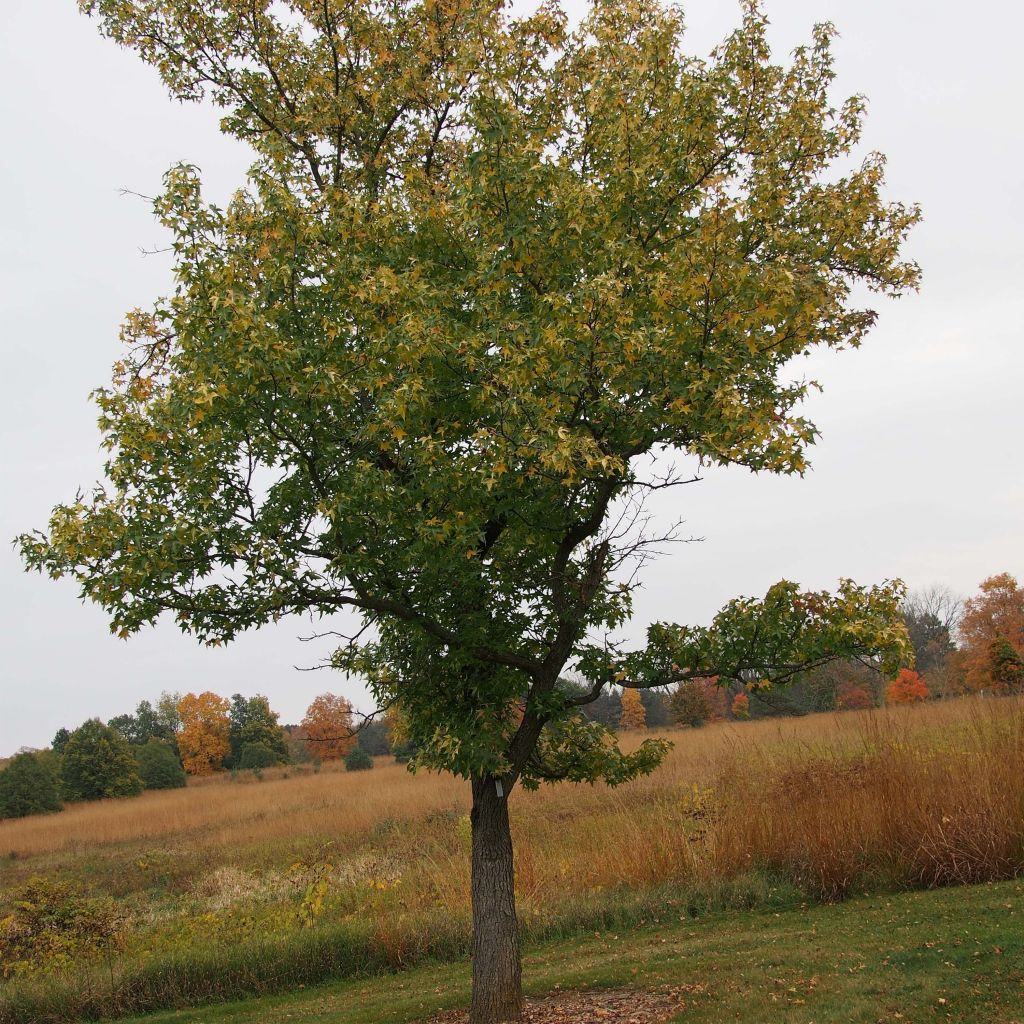

Liquidambar styraciflua Aurea
Liquidambar styraciflua Aurea
Liquidambar styraciflua Aurea
Copalme d'Amérique, Styrax d'Amérique
Home or relay delivery (depending on size and destination)
Schedule delivery date,
and select date in basket
This plant carries a 24 months recovery warranty
More information
We guarantee the quality of our plants for a full growing cycle, and will replace at our expense any plant that fails to recover under normal climatic and planting conditions.
Does this plant fit my garden?
Set up your Plantfit profile →
Description
The Liquidambar styraciflua 'Aurea' is a variety of American sweetgum with striking variegated foliage and a much smaller size compared to the species, making it more suitable for small gardens. This deciduous small tree is also characterized by a regular pyramidal habit, but above all by its absolutely remarkable variegated leaves. Its beautiful palmate leaves are a vibrant green with irregular splashes of yellow, then turn yellow-orange, red, and pink in autumn before falling. In winter, its brown corky bark reveals its unique charm. This light-loving species that prefers non-calcareous soil requires a prime location in the garden, ideally in isolation, to fully appreciate its splendor.
The American sweetgum is a tree belonging to the family Hamamelidaceae, which includes many beautifully colored plants in autumn such as Hamamelis, Parrotia, and Loropetalum. This majestic tree is native to North America, specifically the banks of large rivers such as the Mississippi and Ohio. Its name, Liquidambar, comes from the Latin word "liquidus," meaning liquid, and the Arabic word "ambar," meaning amber, referring to the aromatic amber-colored resin that flows from its bark. Discovered in 1528, it was introduced to Europe in 1681.
The 'Aurea' cultivar reaches an average height of 9m (29 in 6 ft) under our climate, with a moderately fast growth rate. It develops a very vertical trunk and regularly spaced lateral branches, forming a dense crown with a distinct irregular pyramidal habit, with a base diameter of about 4.50m (14 in 10 ft). The deciduous foliage is the main asset of this tree. It consists of palmate leaves, divided into 5 to 9 finely toothed triangular lobes, alternately arranged on the branches. They are a speckled and splashed vibrant green, turning to flamboyant colours of yellow, orange, scarlet, and pink in autumn. The inconspicuous flowering occurs in April on trees aged 25 years and older, with separate male aments and pendulous glomerules of female flowers measuring 2 to 3cm (0.8 - 1.2 in) in diameter. After pollination, pom-pom-like fruits similar to those of the plane tree are formed. Each fruit consists of several capsules containing small winged seeds, resembling maple samaras. The bark of the American sweetgum is dark brown with corky crevices. This beautiful tree has a lifespan of about 150 years.
The 'Aurea' sweetgum requires a non-calcareous, deep, and moist but not waterlogged soil, as well as a sunny exposure. Once established, it requires no maintenance. It can be planted either as a standalone specimen on a lawn or in rows along a grand avenue or property boundary. The 'Aurea' sweetgum can often be found in public spaces, where it stands out with its superb colors from spring to autumn. You can also combine it with other colorful trees such as Ginkgo Biloba, Toona sinensis Flamingo, Nyssa sylvatica, and Hamamelis to create a beautiful autumnal palette, as they all thrive in similar cool environments and deep soils.
Properties:
The aromatic resin exuded by the bark is also known as styrax or liquidambar balm. It was once used in aromatherapy, primarily by indigenous populations, and later, upon its arrival in Europe, by cosmetics manufacturers who incorporated it into various preparations such as milks or beauty creams. The wood of the liquidambar, which is reddish-brown in color and renowned for its fragrance and mechanical qualities, was widely used in cabinetmaking for the production of precious furniture.
Report an error about the product description
Liquidambar styraciflua Aurea in pictures
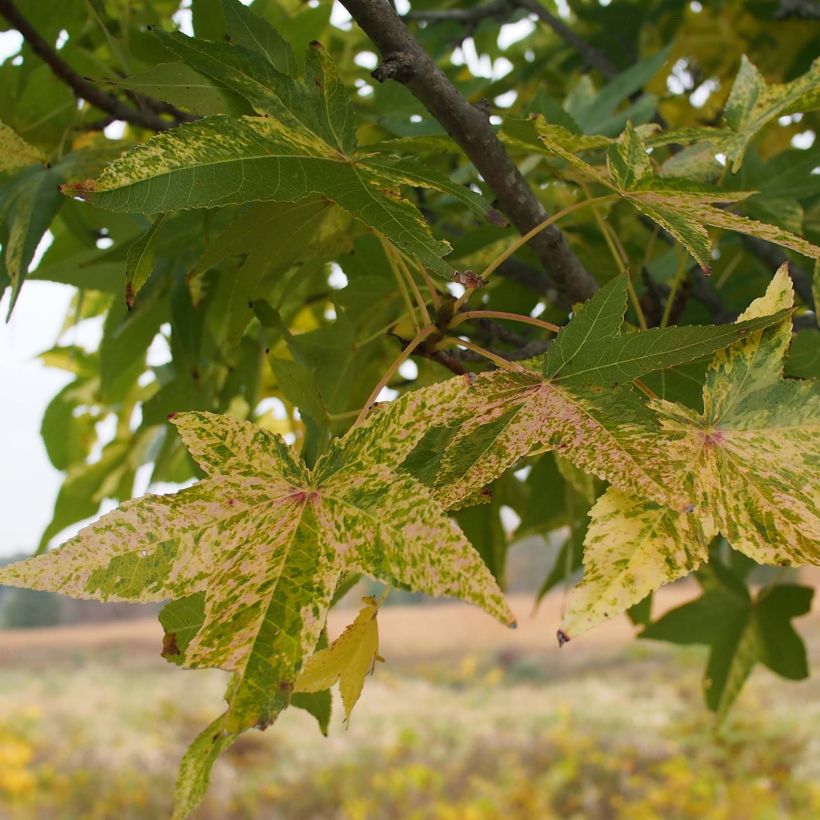

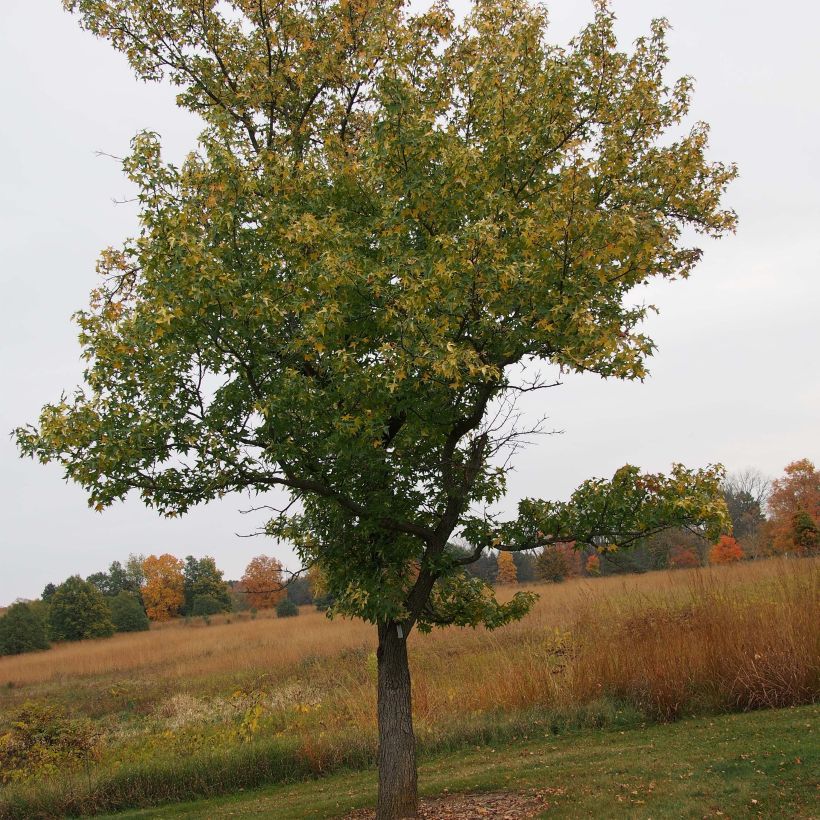

Plant habit
Flowering
Foliage
Botanical data
Liquidambar
styraciflua
Aurea
Hamamelidaceae
Copalme d'Amérique, Styrax d'Amérique
North America
Other Liquidambar - Sweetgum
View all →Planting and care
Planting period
Intended location
Care
-
, onOrder confirmed
Reply from on Promesse de fleurs
Similar products
Haven't found what you were looking for?
Hardiness is the lowest winter temperature a plant can endure without suffering serious damage or even dying. However, hardiness is affected by location (a sheltered area, such as a patio), protection (winter cover) and soil type (hardiness is improved by well-drained soil).

Photo Sharing Terms & Conditions
In order to encourage gardeners to interact and share their experiences, Promesse de fleurs offers various media enabling content to be uploaded onto its Site - in particular via the ‘Photo sharing’ module.
The User agrees to refrain from:
- Posting any content that is illegal, prejudicial, insulting, racist, inciteful to hatred, revisionist, contrary to public decency, that infringes on privacy or on the privacy rights of third parties, in particular the publicity rights of persons and goods, intellectual property rights, or the right to privacy.
- Submitting content on behalf of a third party;
- Impersonate the identity of a third party and/or publish any personal information about a third party;
In general, the User undertakes to refrain from any unethical behaviour.
All Content (in particular text, comments, files, images, photos, videos, creative works, etc.), which may be subject to property or intellectual property rights, image or other private rights, shall remain the property of the User, subject to the limited rights granted by the terms of the licence granted by Promesse de fleurs as stated below. Users are at liberty to publish or not to publish such Content on the Site, notably via the ‘Photo Sharing’ facility, and accept that this Content shall be made public and freely accessible, notably on the Internet.
Users further acknowledge, undertake to have ,and guarantee that they hold all necessary rights and permissions to publish such material on the Site, in particular with regard to the legislation in force pertaining to any privacy, property, intellectual property, image, or contractual rights, or rights of any other nature. By publishing such Content on the Site, Users acknowledge accepting full liability as publishers of the Content within the meaning of the law, and grant Promesse de fleurs, free of charge, an inclusive, worldwide licence for the said Content for the entire duration of its publication, including all reproduction, representation, up/downloading, displaying, performing, transmission, and storage rights.
Users also grant permission for their name to be linked to the Content and accept that this link may not always be made available.
By engaging in posting material, Users consent to their Content becoming automatically accessible on the Internet, in particular on other sites and/or blogs and/or web pages of the Promesse de fleurs site, including in particular social pages and the Promesse de fleurs catalogue.
Users may secure the removal of entrusted content free of charge by issuing a simple request via our contact form.
The flowering period indicated on our website applies to countries and regions located in USDA zone 8 (France, the United Kingdom, Ireland, the Netherlands, etc.)
It will vary according to where you live:
- In zones 9 to 10 (Italy, Spain, Greece, etc.), flowering will occur about 2 to 4 weeks earlier.
- In zones 6 to 7 (Germany, Poland, Slovenia, and lower mountainous regions), flowering will be delayed by 2 to 3 weeks.
- In zone 5 (Central Europe, Scandinavia), blooming will be delayed by 3 to 5 weeks.
In temperate climates, pruning of spring-flowering shrubs (forsythia, spireas, etc.) should be done just after flowering.
Pruning of summer-flowering shrubs (Indian Lilac, Perovskia, etc.) can be done in winter or spring.
In cold regions as well as with frost-sensitive plants, avoid pruning too early when severe frosts may still occur.
The planting period indicated on our website applies to countries and regions located in USDA zone 8 (France, United Kingdom, Ireland, Netherlands).
It will vary according to where you live:
- In Mediterranean zones (Marseille, Madrid, Milan, etc.), autumn and winter are the best planting periods.
- In continental zones (Strasbourg, Munich, Vienna, etc.), delay planting by 2 to 3 weeks in spring and bring it forward by 2 to 4 weeks in autumn.
- In mountainous regions (the Alps, Pyrenees, Carpathians, etc.), it is best to plant in late spring (May-June) or late summer (August-September).
The harvesting period indicated on our website applies to countries and regions in USDA zone 8 (France, England, Ireland, the Netherlands).
In colder areas (Scandinavia, Poland, Austria...) fruit and vegetable harvests are likely to be delayed by 3-4 weeks.
In warmer areas (Italy, Spain, Greece, etc.), harvesting will probably take place earlier, depending on weather conditions.
The sowing periods indicated on our website apply to countries and regions within USDA Zone 8 (France, UK, Ireland, Netherlands).
In colder areas (Scandinavia, Poland, Austria...), delay any outdoor sowing by 3-4 weeks, or sow under glass.
In warmer climes (Italy, Spain, Greece, etc.), bring outdoor sowing forward by a few weeks.



































